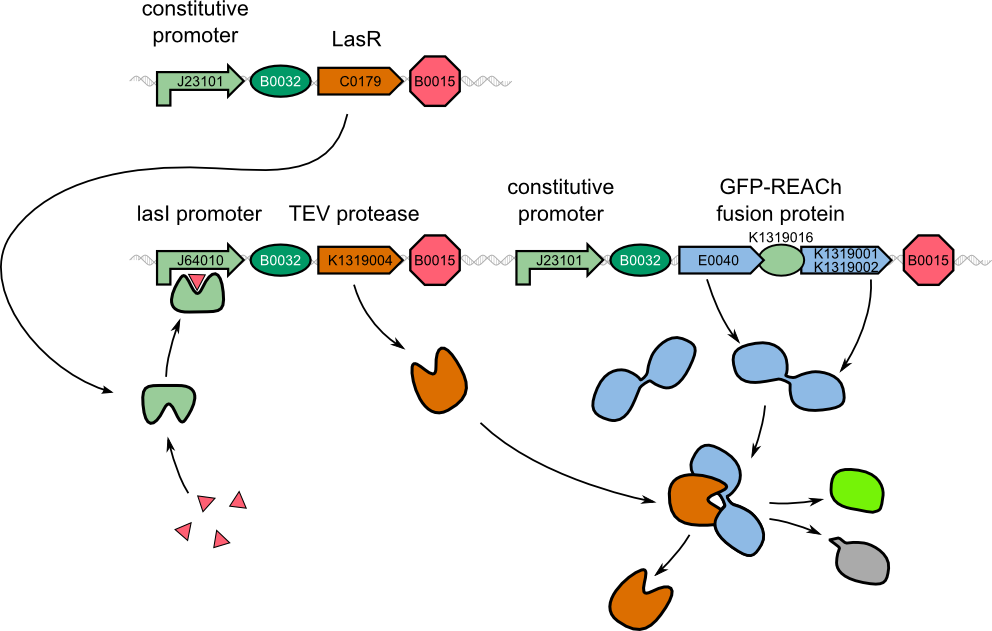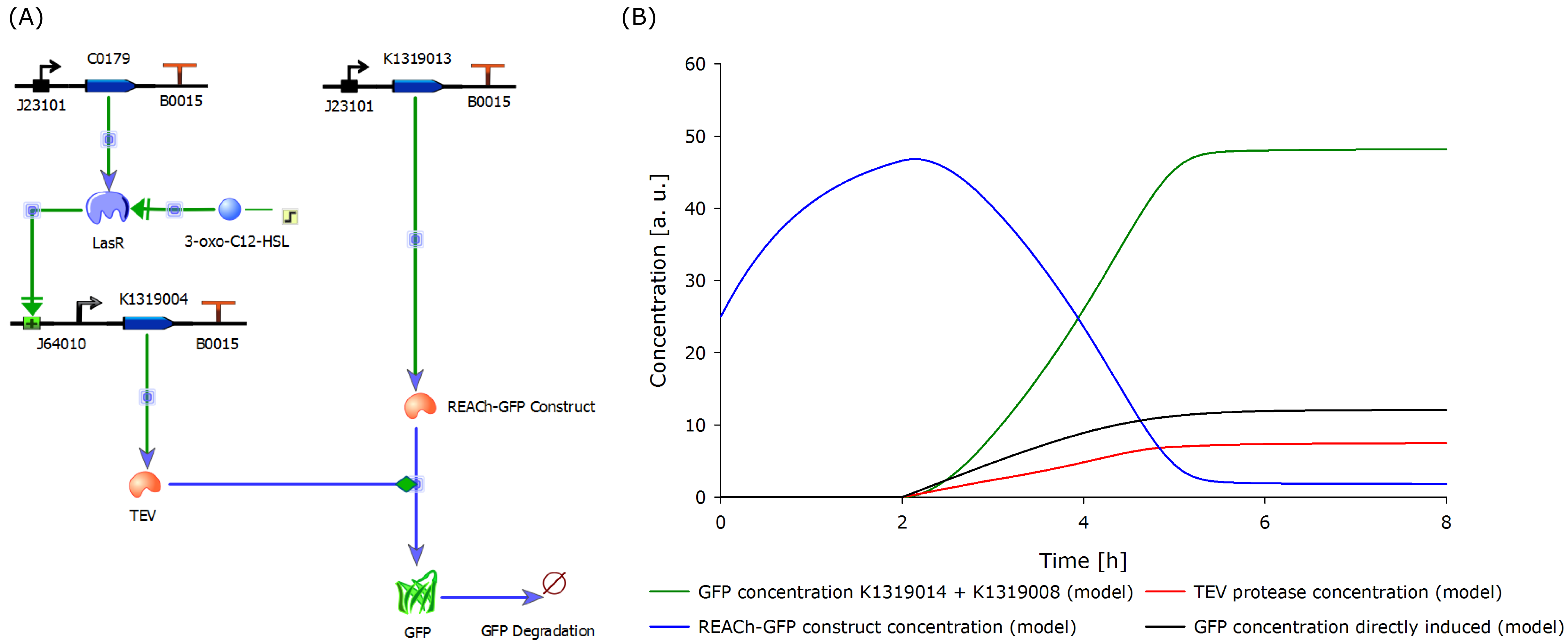Team:Aachen/Project/Model
From 2014.igem.org
(→Modeling) |
(→Modeling) |
||
| Line 24: | Line 24: | ||
</center> | </center> | ||
| - | The model was fitted to the data gathered from the characterization experiment conducted in shake flasks. Additionally, the data from the characterization experiment of the double plasmid construct K1319014 + K1319008 in the chip system was added. The data was derived from the plate reader output of the four central spots of the chip. The development of the fluorescence is shown in [https://2014.igem.org/Team:Aachen/Project/FRET_Reporter#reachachievementschip here]. It is shown that the fluorescent response occurs later than in the characterization experiment in shake flasks. This is explainable as the solid agar chip poses a greater diffusion barrier than liquid medium as used in the shake flasks. Further, the | + | The model was fitted to the data gathered from the characterization experiment conducted in shake flasks. Additionally, the data from the characterization experiment of the double plasmid construct K1319014 + K1319008 in the chip system was added. The data was derived from the plate reader output of the four central spots of the chip. The development of the fluorescence is shown in [https://2014.igem.org/Team:Aachen/Project/FRET_Reporter#reachachievementschip here]. It is shown that the fluorescent response occurs later than in the characterization experiment in shake flasks. This is explainable as the solid agar chip poses a greater diffusion barrier than liquid medium as used in the shake flasks. Further, the rate of fluorescence increase over time is smaller than in the characterization experiments in shaking flasks. The reason for that is the oxygen limitation of the sensor cells when embedded in agar chips. |
{{Team:Aachen/BlockSeparator}} | {{Team:Aachen/BlockSeparator}} | ||
Revision as of 20:11, 17 October 2014
|
|
 "
"


